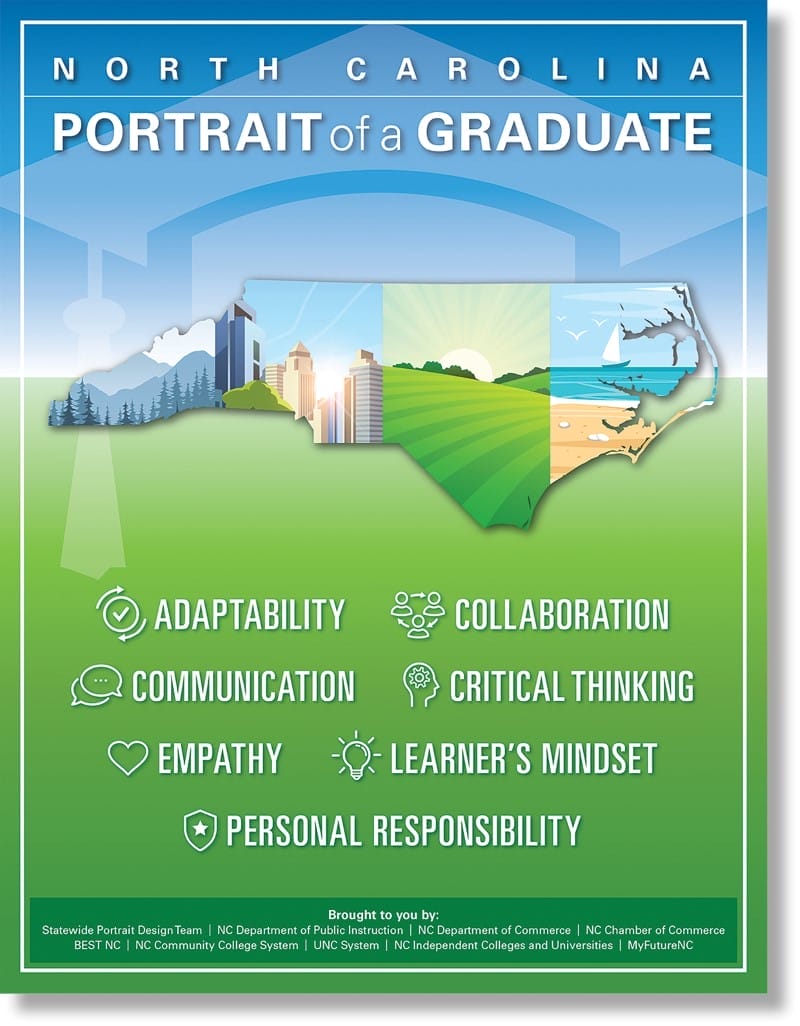Not all high school graduates continue their education at a two- or four-year college or university. Many choose to enter the job market or enlist in a military branch. Whichever path they choose, North Carolina intends for them to be not just successful, but in demand by employers or supervisors. In October 2022, the state’s Department of Public Instruction (DPI) introduced the Portrait of a Graduate, a visioning process for ensuring that students graduate high school equipped with soft skills that increasingly are required by employers. Battelle for Kids, a national nonprofit that works with educators and communities to improve learning outcomes, is the developer of the Portrait of a Graduate; it works with independent school districts across the country and increasingly with states, such as North Carolina.

Catherine Truitt, Superintendent, North Carolina Department of Public Instruction
“A number of states are engaged in this kind of work,” Dr. Karen Garza, president and CEO of Battelle for Kids, tells Site Selection. “But I give North Carolina and DPI Superintendent Catherine Truitt a lot of credit, because they’re leading the way in thinking differently about their education systems today. We have to expand our definition of success and equip our students in new and different ways. This world is very complex and rapidly changing. The skills needed today are very different than the skills required in the past.”
Today’s In-Demand Skills
America Succeeds, a nonprofit dedicated to modernizing education systems, refers to these skills as durable skills. It notes that of 80 million job postings from 2020-2021, seven of the 10 most-requested skills are durable skills. Moreover, the top five durable skills were requested in job postings 4.7 times more often than the top five hard skills. Durable skills, it maintains, are in demand for jobs across the workforce, regardless of educational attainment level, industry sector or geography.
The skills identified by DPI and its research partners in the business, workforce board, economic development and higher education communities that are the foundation of North Carolina’s Portrait of a Graduate are Adaptability, Collaboration, Communication, Critical Thinking, Empathy, Learner’s Mindset and Personal Responsibility.
“Our traditional public system of K-12 education is not preparing most people for success in this economy,” says Superintendent Truitt. “Portrait of a Graduate for me was about trying to reorient public K-12 education to being more workforce aligned. We must make sure that we are preparing students not just for the finish line of graduation. Every student is on a career journey. In K-12 that may include a four-year residential college experience, or it may not.”
Most educators would gladly teach durable skills, says Truitt, but those don’t get tested. “What gets measured gets taught,” she notes.
Portrait of a Graduate is not a program that will be mandated and added automatically to curricula. “Right now, we’re working on rubrics and assessments to give teachers to use if they choose,” says Truitt. “We don’t ever want to move away from accountability that occurs through testing. But we need things in addition to academic rigor that we are using to define what student success and school quality looks like. That’s where the Portrait comes in.”
How Businesses Will Benefit
“One of our biggest champions is the North Carolina Chamber of Commerce,” Truitt notes, “and the Economic Development Partnership of North Carolina has invited me to come to the table to speak with executives who are thinking about coming here. I would hazard a guess that most states are not bringing K-12 to that table. I want CEOs to know that we are digging down into middle school to get kids ready for what happens after high school.”

Dr. Karen Garza, President & CEO, Battelle for Kids
Battelle for Kids’ Karen Garza points to the enormous challenge businesses face in hiring their workforce. “Business leaders are consistently saying they want to hire people with skills including collaboration, communication, problem solving and creativity,” she relates. “We can teach them the unique content knowledge and needs for a particular industry, but it’s still difficult for them to hire. If I’m a business leader, and this is my number one pain point, which is the case for a lot of businesses, I’m going to go where states or communities are prioritizing this. They will have a greater chance of finding the best workforce they can hire in those communities.”

